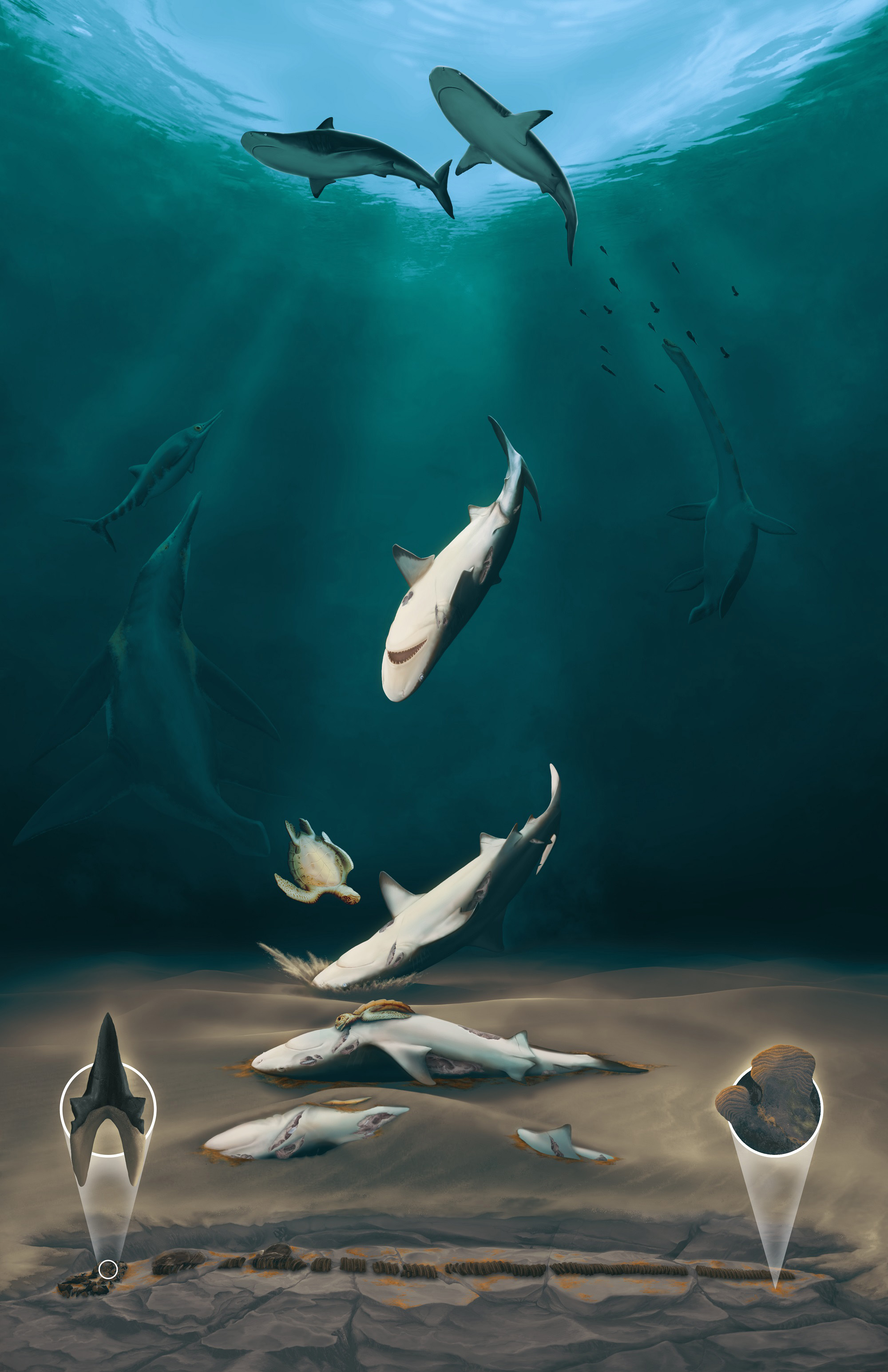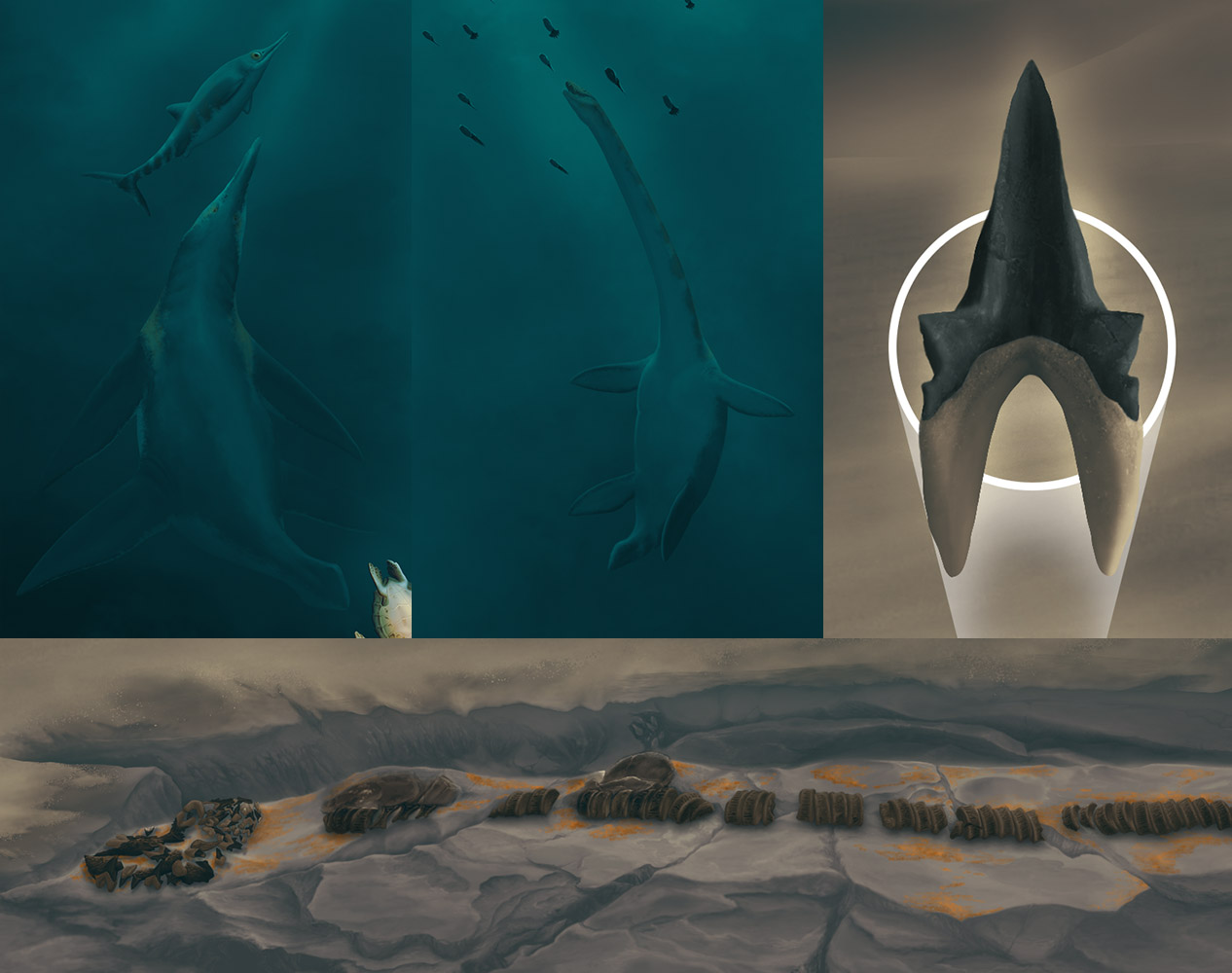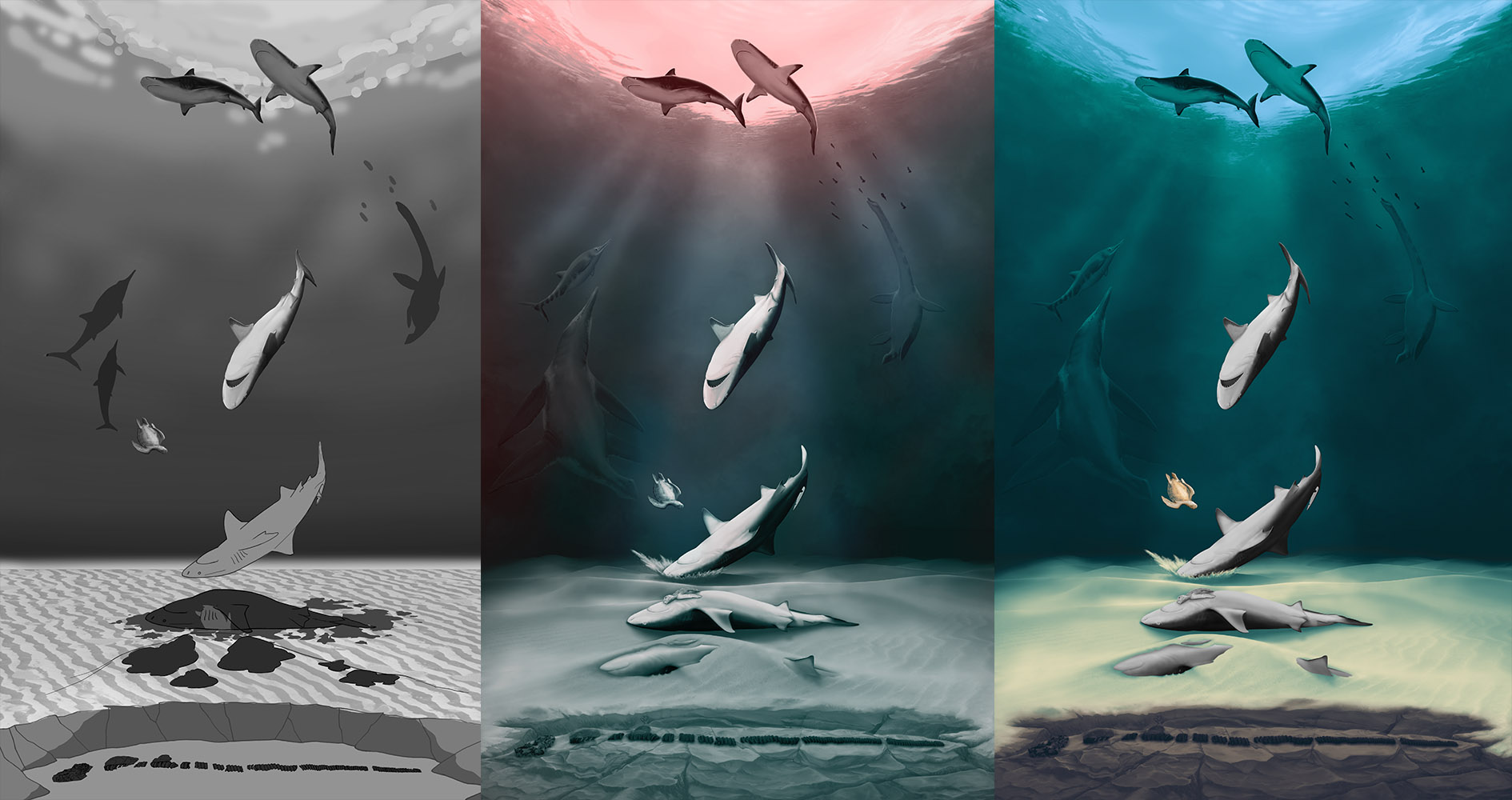Un nuevo Protolamna ricaurtei

Final painting
Illustrated for: Cristian D. Benavides-Cabra, José A. Narváez-Rincón, Daniel E. Pomar
This illustration was created to accompany the publication by Benavides-Cabra et al., 2025, which presents a new specimen of Protolamna ricaurtei Carrillo-Briceño, Parra, and Luque, 2019; currently the most complete lamniform shark known from the Lower Cretaceous.
This depicts an artistic rendition of the taphonomic history of specimen CFSTA090318 as interpreted in the corresponding article. It shows its sinking, burial, and coverage by bacterial mats, as well as its fossilized remains and those of the associated turtle.

Details form the final illustration. Pliosauridae (CFSTA 2-1) and Muiscasaurus catheti. Callawayasaurus colombiensis. Protolamna ricaurtei tooth detail. Protolamna ricaurtei (CFSTA090318) detail of the anterior portion of the studied fossil.
Other fauna corresponding to Association 3 of the Arcillolitas abigarradas Member of the Paja Formation as identified by Benavides-Cabra et al., 2023, from the Upper Aptian beds, can be seen in the background of the scene.

Initial sketch, digital sketch and early process steps

Advanced process steps and color explorations
Acknowledgments
Many thanks to Cristian D. Benavides-Cabra, José A. Narváez-Rincón, Daniel E. Pomar, and my family for their comments and corrections throughout this project.
References
- Cristian D. Benavides-Cabra, María E. Páramo-Fonseca, José A. Narváez-Rincón, Daniel E. Pomar, A large lamniform shark from the Aptian of Villa de Leiva (Boyacá, Colombia), based on the first Lower Cretaceous shark specimen preserving both teeth and vertebrae, Cretaceous Research, Volume 178, 2026, 106211, ISSN 0195-6671, https://doi.org/10.1016/j.cretres.2025.106211
- Benavides-Cabra, C. D., Páramo-Fonseca, M. E., Palma-Castro, H. D., Narváez-Rincón, J. A. & Ramos-Clavijo, M. P. (2023). Stratigraphic distribution of marine vertebrates of the arcillolitas abigarradas member (Paja Formation) from the Villa de Leiva – Sáchica - Sutamarchán region, Boyacá, Colombia. Earth Sciences Research Journal, 27(3), 211–226. https://doi.org/10.15446/esrj.v27n3.108292